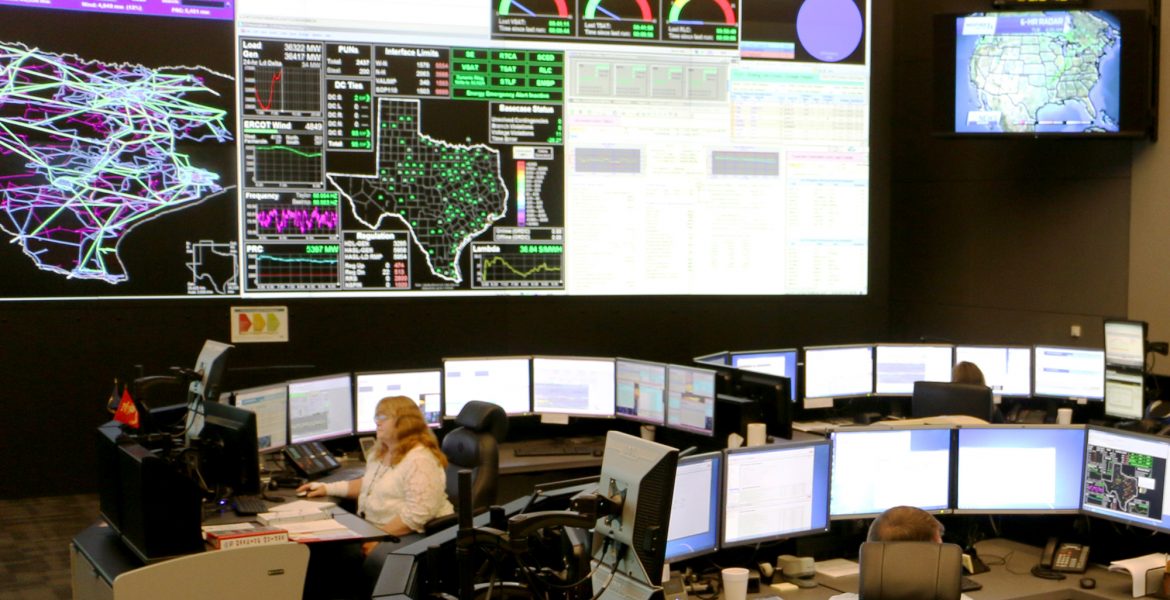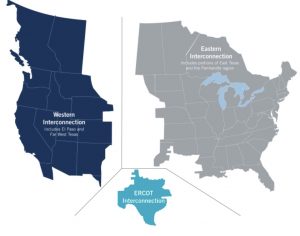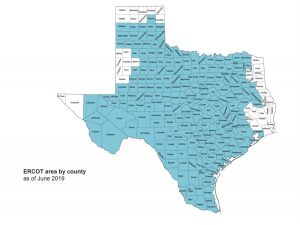The week of Feb. 14, millions of Texans endured a winter storm, which led to days-long power outages and simultaneously left some residents without running water.
“(The storm) pushed all of our infrastructure beyond its breaking point to the point where we had the huge mess,” Dr. Joshua Rhodes, research associate for Webber Energy Group at University of Texas at Austin, said.
Texas – with the exclusion of 41 counties – is part of an independent power grid named the Electric Reliability Council of Texas (ERCOT), which provides approximately 90% of the electricity consumed in the state.
The remaining 10% includes some of East Texas, the upper Panhandle and El Paso, who get their energy from other power grids, according to the Texas Tribune.
Why is Texas on its own power grid?
“By the time the 1930s hit and the federal government was starting to regulate electricity, Texas realized if they kept the grid within its own borders, it wouldn’t fall underneath as much federal jurisdiction,” Rhodes said. “It’s not surprising to me that given the Texas ethos that we kind of did that away; it’s guided a lot of what (Texas) has done.”
However, somewhere along the way some counties along the Texas borders may have chosen to not be part of ERCOT.
“I’m sure there was a little bit kind of a mish-mash back and forth where (the counties) had to choose a side at one point,” Rhodes said. “Like, ‘Hey you need to be in ERCOT or be in this other region.’ Back when electricity was smaller, it was easier to do that type of thing.”
Photos from ERCOT.
Why might some Texans see exorbitant electric bills?
Depending on where they live, Texans on ERCOT’s grid either have fixed-rate plans or pass-through plans whose rates fluctuate according to the wholesale prices of energy.
Rhodes said ERCOT does not sell or buy electricity but it manages the market. He compared it to the New York Stock Exchange where ERCOT acts as the host, power plants act as the sellers and energy companies are the buyers.
There are intricacies because sometimes retailers, like CPS Energy, own power plants. While these companies are buying expensive energy, they might also sell expensive energy, Rhodes said.
However, the majority of Texas energy consumers are on fixed-rate plans and may not see rate increases right away, he said.
In some areas, people have the option of choosing their electricity provider.
People in retail choice regions, which are not in Austin or San Antonio, are allowed to pick the energy company they want to buy electricity from and can choose from different plans. Energy companies in these regions offer plans with wholesale market rates called pass-through plans, he said.
Wholesale market prices go up and down – changing every 15 minutes, Rhodes said.
Increased rates depend on how well the company performed during the storm, such as if their power plants were winterized and if they generated as much energy as their customers were consuming. It can also vary based on inflation and fuel costs, Rhodes said.
If companies got caught short producing energy, they had to purchase energy from the wholesale market.
On average, the wholesale market price is 3 cents per kilowatt hour, whereas people on fixed-rate plans pay about 10 cents per kilowatt hour; however, the market price went up to $9 per kilowatt hour during the storm, he said.
“That difference between whatever losses those companies incurred…won’t take effect immediately – (but) eventually that money will go onto the customer bills unless the Legislature decides to do something,” Rhodes said. “The majority of Texas customers – I don’t think residential customers anyways – won’t see massive bills this time around but they may slowly rise over the next few years.”
The people who opted into pass-through plans are seeing shocking electric bills.
Griddy, a Texas company who offered pass-through plans, charged their customers hundreds to thousands of dollars the week of the storm, according to NPR.
Since then, ERCOT shut down Griddy, according to the company’s website.
Why did some people have power while others didn’t?
Texans braved a vicious domino effect as statewide infrastructure failed.
ERCOT told transmission and distribution utility companies that they had to reduce their demand by a certain number. From there, companies were in charge of allocating where to turn off power and where to leave it on, Rhodes said.
“You can’t make more (electricity) and then use it later – it has to be consumed,” Rhodes said. “It’s generated or made at the exact instance it’s being consumed in the market.”
Electricity grids must be perfectly balanced in real time. If supply and demand does not match at all times, the entire grid is in jeopardy of going down, he said.
“(Energy companies) have critical circuits that they want to keep on at all costs – places with hospitals and fire (departments) and 911 systems and all of these emergency systems that are core to society,” Rhodes said. “What happened was in some regions – like for example, Austin where I’m from – when they kept on all of their critical circuits, they just realized they didn’t have any more power to give.”
If the entire grid had gone down, not only would it have taken several weeks to get the grid back up, but things could have broken and power plants would have become inoperable. It could have taken months to get power plants back up, he said.
“If they can’t keep the entire grid stable, at least maybe they can keep up a smaller amount of the grid stable,” Rhodes said. “It’s much faster to bring up the rest of the grid from a small stable grid than it is if the entire thing is black.”
Failure across the state occured as some power plants could not get natural gas and their water intake froze. The available natural gas was going to homes and businesses for heating – shutting down more power plants, Rhodes said.
Some West Texas natural gas wells froze – not leaving enough gas for power plants. Tree branches not used to withstand snow and ice fell – knocking down lines giving power to homes and businesses. There were no snow plows or de-icing salts – making roads too dangerous for crews to go out, he said.
Why did we have water problems?
Water utilities instated water boil notices because they could not guarantee that the water in the pipes was clean as many tried to prevent their pipes from freezing.
“If everybody is running their faucets to try to keep their pipes from freezing, if the pressure gets too low, that pipe can basically turn into a French drain which takes water from the inside and puts it down the pipe,” Rhodes said.
Water utility companies lifted the water-boil notice after they were able to get enough pressure back and flushed enough water through the pipes to think it is clean, he said.
“All water utilities know that they have leaks in their system – there’s just too many miles of pipeline in order to be able to guarantee that nothing leaks,” Rhodes said. “They keep the lines at a certain pressure because if the pipe leaks, they want it to leak out because as the water is leaving the pipelines then you’re able to control the water in the pipeline.”
What happens next?
Moving forward, Texas energy companies must determine if they will winterize their facilities.
“Is it worth extra insulation on pipes? Is it worth building a facility around your cooling tower so that it doesn’t freeze up?” Rhodes said. “Is it worth installing blade heaters on wind turbines and things like that for how often you think you’re actually going to use it? That’s the decision that owners of these facilities have to figure out.”








